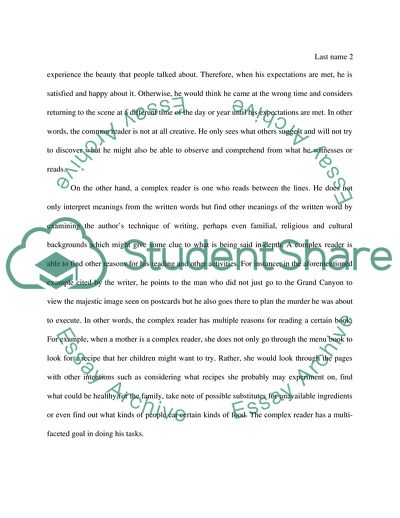Cite this document
(Comparison Between Common and Complex Readers Essay Example | Topics and Well Written Essays - 1250 words, n.d.)
Comparison Between Common and Complex Readers Essay Example | Topics and Well Written Essays - 1250 words. https://studentshare.org/english/1804106-common-reader-and-complex-reader
Comparison Between Common and Complex Readers Essay Example | Topics and Well Written Essays - 1250 words. https://studentshare.org/english/1804106-common-reader-and-complex-reader
(Comparison Between Common and Complex Readers Essay Example | Topics and Well Written Essays - 1250 Words)
Comparison Between Common and Complex Readers Essay Example | Topics and Well Written Essays - 1250 Words. https://studentshare.org/english/1804106-common-reader-and-complex-reader.
Comparison Between Common and Complex Readers Essay Example | Topics and Well Written Essays - 1250 Words. https://studentshare.org/english/1804106-common-reader-and-complex-reader.
“Comparison Between Common and Complex Readers Essay Example | Topics and Well Written Essays - 1250 Words”. https://studentshare.org/english/1804106-common-reader-and-complex-reader.


